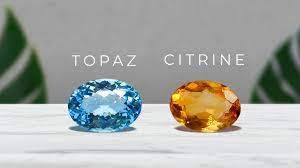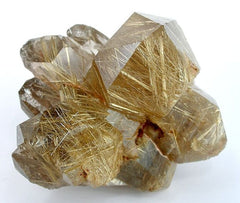Celebrating HM Elizabeth I's birthday with a look at the gemstones of the Crown Jewels
Apr 09 2016 0 Comments
The 141 artefacts which make up the British Crown Jewels date to the Reformation almost 400 years ago; there are crowns and sceptres, orbs and swords, all containing some of the most valuable gemstones ever to have been unearthed!

The Imperial State Crown is the most important piece in the collection. The stones it contains are the most famous, and the principal survivors of the Reformation (a period of historic upheaval in England, where the monarchy was temporarily dissolved and many of its treasures destroyed).
Primarily, the Edward the Confessor's sapphire, now suspended in the maltese cross which tops the cross. Its original owner wore it in a ring when he ruled in the 11th century, and indeed buried with him in 1066 before being removed and reset in a crown by Henry I in 1201. Incredible that anyone would want such an amazing stone to be six feet under, even if it was in the king's tomb!
The centrepiece of the crown is the large ruby at the front, whose history is truly incredible! Originally belonging to the King of Granada, Pedro the Cruel of Castille murdered him and presented the jewel to Edward, the Black Prince. It was passed down the English monarchy, escaping the odd skirmish in battle (again, can you believe anyone would wear this to go out and do battle?!). Legend has it that Richard I wore it at the Battle of Bosworth in 1485, and the stone rolled into a hawthorn bush when he was slain. Lord Stanley supposedly picked it up and placed it on the head of the victorious Henry Tudor, so crowning the new monarch and beginning the Tudor dynasty.

On the rear of the crown is the Stuart Sapphire, which had been owned by Scottish royalty for centuries before being given to George III. Its original owner was reputed to be Alexander II of Scotland, who had it set in a crown for his coronation in 1214. It came into British possession when the union of Scotland and England was created, but sold when Oliver Cromwell came to power during the Interregnum. It was only then placed in the Imperial State Crown by Queen Victoria, in 1838.
The very last Tudor, Elizabeth I, gave her pearl earrings to be included in the crown, too. All in all, it contains 2,783 diamonds, 17 sapphires, 277 pearls, 11 emeralds and 5 rubies. Wow!

However, the most famous gemstone among the British Crown Jewels is the Koh-i-noor diamond from Andra Pradesh, India - also known as the 'Mountain of Light diamond' (seen above, inset in a crown made for the Queen Mother). Its history is said to date back to the 13th century, when it weighed some 793 carats! Queen Victoria's husband, Prince Albert, ordered it to be cut down in order to increase its brilliance, so in its current incarnation, the diamond is 'only' 105.6 carats but 42% more dazzling to the beholder. Since its history has entailed so much violent struggle between men, the Koh-i-noor is said to bring any man bad luck, and is now only worn by female members of the Royal family.
However, India and Pakistan now both make claims that the Mountain of Light was a forcibly-taken spoil of colonialism, rather than a gift from Punjab rulers to the East India Company, as Britain alleges.
If you would like to purchase some gemstones with no colonial hangover attached, Gemstones Brazil can assure you of the ethical and environmentally-friendly provenance of all of its gemstones. None of them are 793 carats, though...
0 comments





Leave a Comment